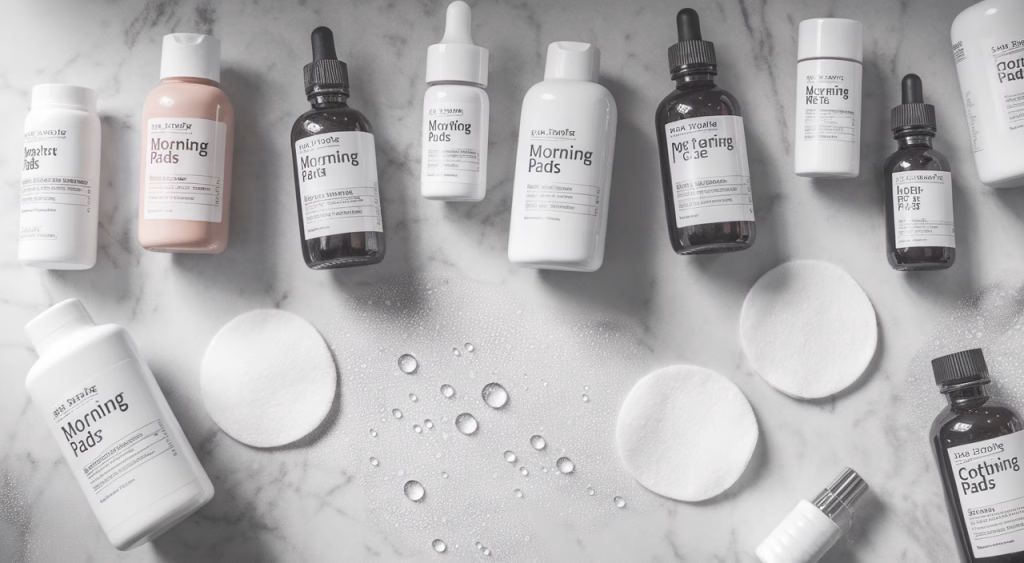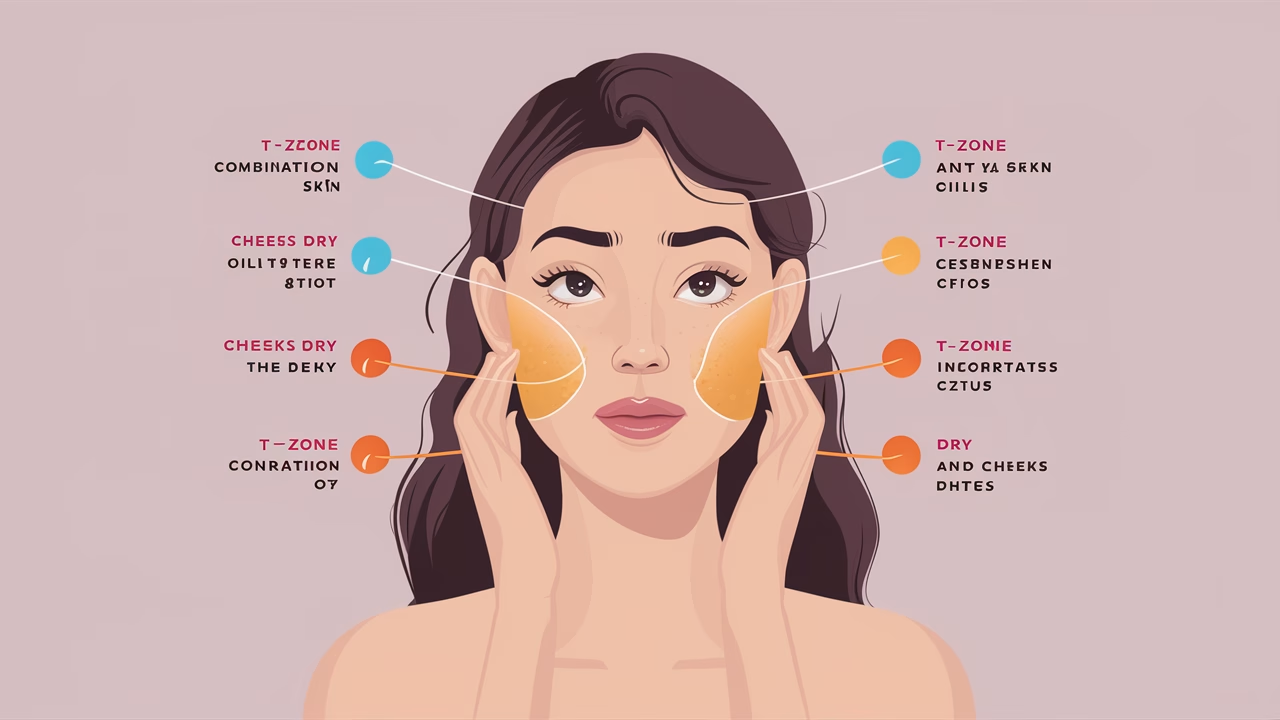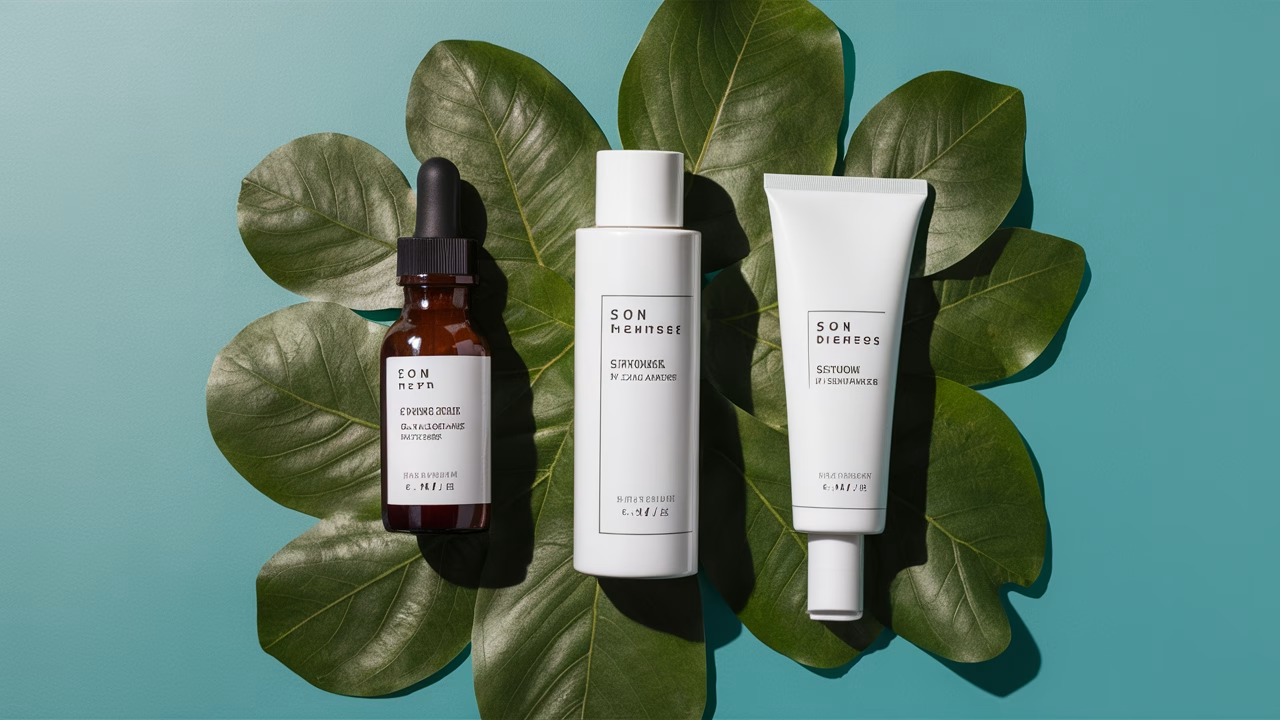What is the best skincare routine for combination skin?
The most effective skincare routine for combination skin means finding perfect balance between hydrating dry areas and controlling oil in others—often in the same routine. It involves lightweight hydration, gentle cleansing, and strategic ingredient choices that simultaneously nourish and regulate both skin zones.
- Tailored Routine: Learn the right skincare routine steps for combination skin in both the morning and evening.
- Smart Ingredients: Discover natural ingredients for combination skin care and products that hydrate without clogging pores.
- Dual-Zone Approach: Build an effective skincare routine for oily T-zone and dry cheeks.
- Product Guidance: Understand what makes products the best skincare products for combination skin.
- Lifestyle Tips: Simple habits make a big impact—learn practical tips for managing combination skin.
Introduction to Combination Skin
Understanding Combination Skin
Let’s start with the basics: Combination skin is exactly what it sounds like—a mix of skin types. Most people notice oiliness in the T-zone (forehead, nose, chin) while experiencing dryness or normal texture on the cheeks and jawline. This dual nature means your face requires skincare routine for combination skin tailored to multiple needs simultaneously.
Ever felt like your moisturizer is too rich for some parts of your face but nowhere near enough for others? That’s combination skin talking. This skin type is incredibly common, especially during transitional seasons or hormonal changes, making the right skincare routine steps essential.
Common Issues Faced by Combination Skin Types
Here’s what we often hear from people managing combination skin care:
- “My nose feels oily by lunchtime, but my cheeks are flaking.”
- “Moisturizer either makes me break out—or does nothing.”
- “I don’t know which products to trust for BOTH oily and dry areas.”
Combination skin is prone to breakouts, blackheads, and tightness all at once. Without the right tips for managing combination skin, it can feel like an endless balancing act.
Building Your Skincare Routine
Morning Skincare Routine for Combination Skin
A morning skincare routine for combination skin should refresh, protect, and lightly hydrate without weighing skin down. These skincare routine steps create the perfect foundation for your day.
| Step | Purpose | What to Look For |
|---|---|---|
| 1. Gentle Cleanser | Remove oil buildup | Sulfate-free, pH-balanced |
| 2. Toner | Rebalance pH | Alcohol-free with calming agents |
| 3. Lightweight Serum | Target issues | Niacinamide, hyaluronic acid |
| 4. Moisturizer | Hydration | Gel or lotion-based |
| 5. Sunscreen | UV protection | Oil-free, broad-spectrum SPF |
Evening Skincare Routine for Combination Skin
At night, your skincare routine for combination skin shifts focus to repair and deeper hydration. Your products can be slightly richer while remaining among the best skincare products for combination skin.
| Step | Purpose | What to Look For |
|---|---|---|
| 1. Makeup Remover | Remove surface impurities | Oil cleanser or micellar water |
| 2. Cleanser | Deep clean | Hydrating or gel-based formulas |
| 3. Exfoliate (2-3x/week) | Unclog pores, renew skin | BHA for T-zone, avoid harsh scrubs |
| 4. Toner | Soothing and prep skin | Chamomile, rose water |
| 5. Treatment Serum | Brighten or balance | Retinol alternatives, peptides |
| 6. Night Moisturizer | Repair barrier | Ceramide-rich, oil-free |
Key Ingredients and Products to Look For
Hydrating Products for Combination Skin
Your dry patches crave moisture, but feeding them shouldn’t mean greasing up the rest of your face. This is where the best skincare products for combination skin with cleverly formulated hydrators shine in your routine.
- Hyaluronic Acid: Pulls moisture into the skin—perfect across all zones in your skincare routine for combination skin.
- Glycerin: A lightweight humectant that doesn’t clog pores.
- Aloe Vera: A natural ingredient for combination skin care that soothes inflammation.
Choose gel-cream textures rather than heavy balms to avoid congesting your T-zone while following proper skincare routine steps.
Balancing Products for Combination Skin
Sometimes your skin sends mixed signals—oil here, flakiness there. Here’s how the best skincare products for combination skin decode that challenge.
- Niacinamide: One of the most effective natural ingredients for combination skin care—it refines pores and calms inflammation.
- Zinc: Helps regulate oil and excellent for acne-prone zones.
- Green Tea Extract: A calming, antioxidant-rich booster safe for oily and sensitive areas.
Don’t be afraid to zone-treat: applying a clay mask to the nose while layering hydrating serum on the cheeks isn’t cheating—it’s one of our top tips for managing combination skin effectively.
Tips for Managing Combination Skin
Lifestyle Factors Impacting Combination Skin
You can’t outmoisturize bad habits. Combination skin responds sensitively to internal and external conditions. Here are essential tips for managing combination skin beyond your skincare routine steps:
- Hydration: Not just what’s on your face—drink enough water to support your skincare routine for combination skin.
- Stress: Cortisol impacts oil production and inflammation levels.
- Sleep: Inadequate rest disturbs your skin’s renewal cycle.
Even environmental factors—dry indoor heating or sunny commutes—can swing your skin from glowy to greasy overnight, making consistent tips for managing combination skin crucial.
Mistakes to Avoid in Combination Skin Care
More is not always better when building your skincare routine for combination skin. People often try to fix both oiliness and dryness by throwing everything at their skin. Here are common mistakes that derail the best skincare products for combination skin:
- Using harsh cleansers that strip natural oils—this kicks oil production into overdrive.
- Skipping moisturizer altogether—dry areas only get drier, which triggers imbalance.
- Applying the same product everywhere without tuning in to what different areas need in your skincare routine steps.
Instead, build a thoughtful routine with natural ingredients for combination skin care that evolves with your environment and hormones.
Cost Guide: How Much Should You Spend?
| Product Type | Low-End | Mid-Range | High-End |
|---|---|---|---|
| Cleanser | $8–$12 | $15–$25 | $30–$50 |
| Moisturizer | $10–$15 | $20–$35 | $40–$70 |
| Serum | $12–$20 | $25–$45 | $60–$90 |
| Sunscreen | $10–$18 | $20–$35 | $50–$70 |
FAQs
- What is the biggest challenge with combination skin? Balancing hydration without causing breakouts, especially along the T-zone, while soothing drier cheek areas.
- Should I use separate moisturizers for my T-zone and cheeks? It can be helpful. A lightweight gel in oily areas and a richer cream on the sides works well.
- How can I tell if a product is clogging my pores? Watch for clogged pores, whiteheads, or texture bumps—these often appear shortly after starting a product.
- Is exfoliation safe for combination skin? Absolutely—just stick to gentle, chemical exfoliants like BHA no more than 2–3 times per week.
- Can natural skincare work for combination skin? Yes, especially ingredients like aloe, green tea, and rose water—just ensure they’re in well-formulated products.
- How often should I change my skincare routine? With seasonal or hormonal changes, you might need to update products every few months.
- Are clay masks too drying? On oily zones? Perfect. On cheeks? Use sparingly or not at all—consider multi-masking.


